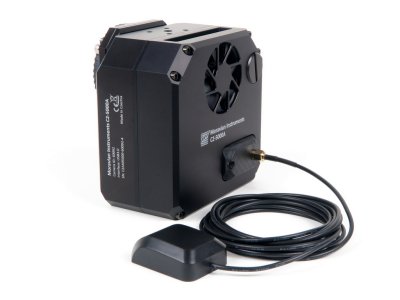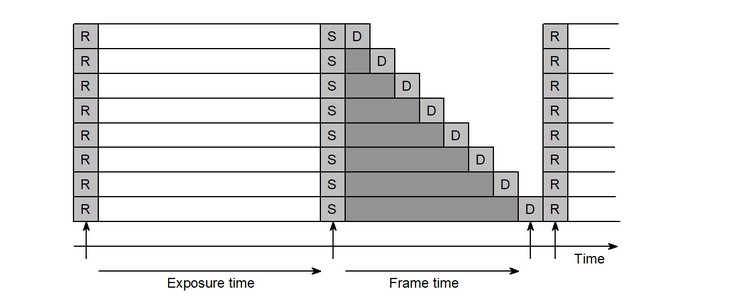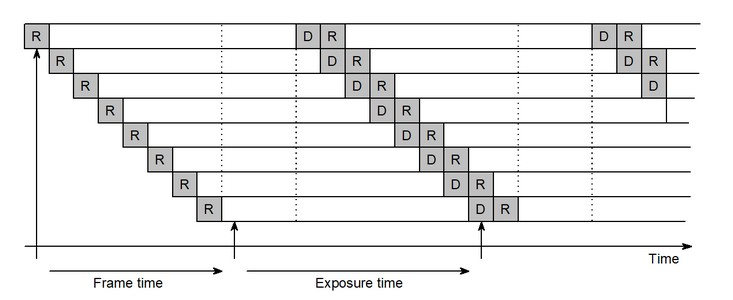
C2-5000A global-shutter CMOS camera with installed GPS
receivers A huge advantage of the global-shutter CMOS sensors, compared to
rolling-shutter ones, is very simple and straightforward way to
determine the exact exposure time. As opposed to rolling-shutter
sensors, all pixels are exposed at exactly the same time, returned by
the GPS receiver, and there is no need to calculate with line time and
pixel y-coordinate.

Illustration of the CMOS global shutter operation On the other hand, the rolling-shutter CMOS sensors expose each
line of pixels in different time, which makes determining of the each
pixel exposure time slightly more complicated.

Illustration of the CMOS rolling shutter operation for
individual exposures 
Illustration of the CMOS rolling shutter operation for
serial exposures Refer to the C2
camera product page for more details.
|